TAGGED AS: aapi, Classic Film, movies
With the recent Oscar domination of Everything Everywhere All at Once, as well as the box office success of films like Crazy Rich Asians and Shang-Chi and the Legend of the Ten Rings, it certainly feels like opportunities for Asian Americans in Hollywood are increasing. It took a long time to get here, though, considering actors of Asian descent have lit up the silver screen since the earliest days of cinema when “Yellowface” was rampant in the film industry, and we wouldn’t have the likes of Minari, Always Be My Maybe, or the upcoming Joy Ride without their pioneering efforts. To celebrate AAPI Heritage Month, we look back at 10 Asian American stars who built meaningful Hollywood careers even as they were frequently marginalized, typecast, or exoticized.

(Photo by Everett Collection)
Though screen legend Sessue Hayakawa is better known as the first true leading man of Asian descent, his wife Tsuru Aoki was, for a time, equally as prolific, making the husband-and-wife team essentially the first Asian power couple in Hollywood. Though there are varying apocryphal accounts of how Hayakawa got his start in the industry, he and Aoki met in the Little Tokyo district of Los Angeles when he joined a theater troupe of local Japanese actors. Together, Hayakawa and Aoki caught the eye of film producer Thomas H. Ince, who made stars of them — particularly Hayakawa — with films like The Typhoon and The Wrath of the Gods in 1914, the same year that the two were married.
Both remained active through the latter half of the 1910s and into the 1920s, but Hayakawa shot to superstardom when he appeared in Cecil B. DeMille’s 1915 film The Cheat, which instantly established him as a sex symbol and led to a series of high-profile roles. Eventually, Hayakawa would form Haworth Pictures Corporation, the first Asian American-owned production company, where he either produced, wrote, directed, edited, or starred in over 20 films, some of them with Aoki — 1919’s The Dragon Painter, their most notable collaboration, was added to the National Film Registry in 2014. As Hayakawa enjoyed success on the level of Douglas Fairbanks and Charlie Chaplin, Aoki eventually retired from acting to raise their children, and Hayakawa’s career continued for decades, culminating in a Best Supporting Actor Oscar nomination for his work on Best Picture-winner The Bridge on the River Kwai in 1957.
“Sessue Hayakawa and [Tsuru] Aoki are a talented couple and have screen technique at their fingertips. A lively intelligence is evident in all their work.”
– Marion Russell, Billboard, Oct. 4, 1919 on The Dragon Painter

(Photo by The Photo-Play World)
Born Josephine Augusta Moy in Philadelphia, Lady Tsen Mei took her stage name in the mid-1910s as a touring vaudeville performer known for imitating songbirds. Though she was multiracial — even identifying as white in the 1910 census — her early films particularly emphasized her Chinese ancestry; her debut, 1918’s For the Freedom of the East, even dubbed her “The Screen’s First and Only Chinese Star.” Publications that profiled her also tended to fabricate stories about her past to make her seem more exotic than her Pennsylvanian roots might have indicated. In 1921, she produced and starred in Lotus Blossom, which would become the defining film of her relatively short-lived screen career, as she would eventually return to vaudeville before retiring altogether. Though her filmography isn’t as extensive as some of the others on this list, she broke ground for those who would come after her, and she remains a stark example of the way Asians and Asian Americans were frequently regarded in the formative years of the movie industry.
“[Lady Tsen Mei] is justly starred. She will be heard from, for such work as she does in Lotus Blossom cannot go unnoticed.”
– Roger Ferri, Exhibitor’s Trade Review, Oct. 29, 1921 on Lotus Blossom
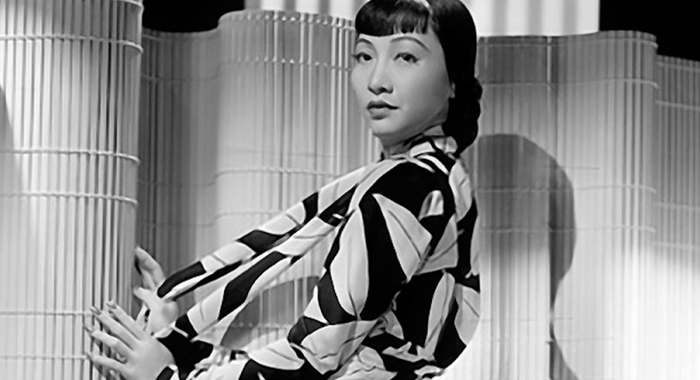
(Photo by Donaldson Collection/Getty Images)
Arguably the most recognizable name on this list, Anna May Wong is well known even among those who might not consider themselves film buffs, and for good reason. Over the course of her career, which began in the silent era and spanned four decades, she earned rave reviews for her work in films like The Thief of Bagdad and Shanghai Express (in which she arguably outshone Marlene Dietrich), became the first Chinese American actress to achieve international stardom, and established herself as a fashion icon.
Most importantly, though, she took an active role in combating the inherently discriminatory industry practices and the outright anti-Chinese sentiment that were prevalent at the time. When studios refused to give her leading roles despite her rising popularity, or only offered her characters based on exaggerated stereotypes, she pulled up stakes and moved to Europe, where she blossomed into a superstar. And when Hollywood beckoned her back in the 1930s, she used her platform to speak out for better Chinese American representation in the industry, eventually taking roles in a number of smaller films that nevertheless gave her the opportunity to play against existing stereotypes — one of those films, 1937’s Daughter of Shanghai, was chosen for preservation in the National Film Registry in 2006. Wong was a multi-talented actress who found success in film, television, radio, and theater, but she’s an Asian American icon because she fought against the status quo and won.
“If you want a lot of film for your money, stay through to the end. If you prefer quality to quantity, get up when they fade out the scene of Anna May Wong playing solitaire.”
– Jack Moffitt, Kansas City Star, Feb. 21, 1932 on Shanghai Express
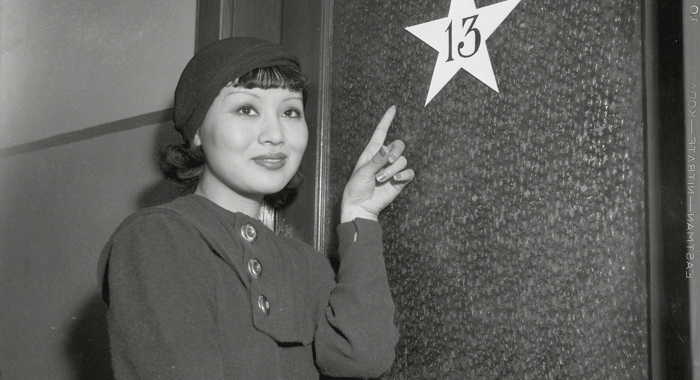
(Photo by Bettmann/Getty Images)
Following in the footsteps of Sessue Hayakawa and Tsuru Aoki, Kyoto-born Toshiye Ichioka began her career in the late 1920s, almost exclusively playing minor Chinese characters in silent films like Streets of Shanghai. When she transitioned into the sound era, she adopted the stage name Toshia Mori and caught a break in 1932 when the United States Western Association of Motion Picture Advertisers (WAMPAS) named her in their annual list of up-and-coming actresses, or Baby Stars, alongside Ginger Rogers — she was the only non-white actress to earn the honor that year. The recognition nabbed her a pivotal role — one that was reportedly intended for Anna May Wong — in Fank Capra’s 1933 war drama The Bitter Tea of General Yen, the first film to play at Radio City Music Hall. Despite impressing Capra and the studio with her work, Mori returned to minor roles in her remaining films, and she finished her career with appearances in a pair of Charlie Chan films, which, of course, famously starred white actors as the titular Chinese detective.
“There is also an admirable performance by the newly-elected Wampas baby star, Miss Toshia Mori, as the cunning lotus flower in the Yen household.”
– Harold W. Cohen, Pittsburgh Post-Gazette, Dec. 31, 1932 on The Bitter Tea of General Yen
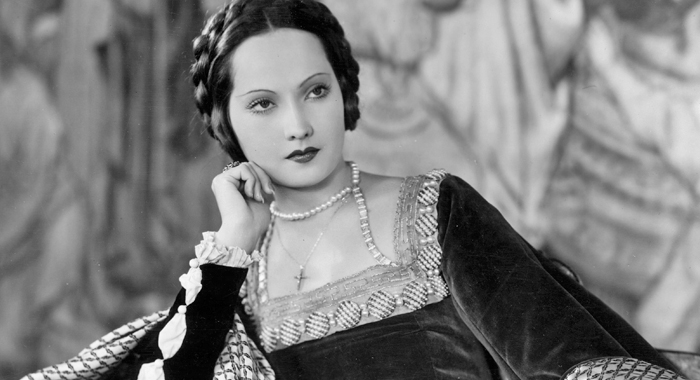
(Photo by Henry Guttmann Collection/Getty Images)
The story of Merle Oberon is a complicated one, beginning with the fact that her mother gave birth to her when she was only 12 years old, so the two were raised as sisters in order to avoid scandal. Beyond that, Oberon was born in what was then Bombay, India, where she spent her childhood, and her mother was of Sri Lankan (then called Ceylon) descent. As a child, her mixed heritage was a constant target for ridicule, and even as she began to pursue acting in her late teens, it presented hurdles for her to overcome.
When her career took off, first in England with director Alexander Korda and soon after in Hollywood, Oberon took to telling folks that she was born in Tasmania, and that her birth records were destroyed in a fire; she maintained the ruse until her death and continued to play white characters in her film roles. It’s been argued that, due to anti-miscegenation guidelines (aka the Hays Code) that prevented the portrayal of interracial relationships on screen, Oberon would not have been offered many of the roles she got, including her Academy Award-nominated performance in the 1935 drama The Dark Angel, if she had been more open about her heritage. Oberon enjoyed a long and successful film career, but her life is indicative of the challenges that Asian Americans faced in the industry for decades and the extreme measures some of them felt were necessary in order to maintain their careers.
“[Oberon] possesses vivacity, charm and histrionic skill. And she has learned how to be dramatic and restrained at the same moment.”
– The Boston Globe, Sept. 21, 1935 on The Dark Angel
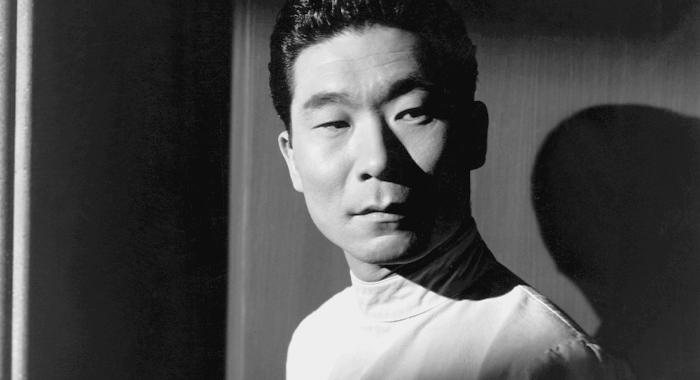
(Photo by Everett Collection)
Los Angeles native and prolific character actor Philip Ahn’s resume boasts over 180 credits spanning four decades across film and television, working with people like Humphrey Bogart, Frank Sinatra, and Elvis, and he is widely considered the first prominent Korean American film star in Hollywood. He debuted in the mid-1930s, appearing in movies alongside Bing Crosby and Shirley Temple, and he shared the screen with his close friend Anna May Wong in a pair of films, including Daughter of Shanghai. Like others on this list, he often portrayed characters who were other Asian nationalities; during World War II, when anti-Japanese sentiment was at its height, his tendency to play Japanese villains in war films even earned him a number of misguided death threats.
In the 1950s, Ahn transitioned to television, where he appeared on shows like Bonanza, M*A*S*H, and Hawaii Five-O, and landed arguably his most recognizable role as Master Kan on Kung Fu — which notably starred a white actor (David Carradine) portraying an Asian lead character. Outside of his work on screen, Ahn was also an advocate for the Korean American community in Los Angeles, where he was instrumental in achieving “sister city” status with Busan, South Korea and coordinating the establishment of the iconic Korean Bell of Friendship monument. Thanks to his pioneering contributions both on and off screen, Ahn helped increase Korean American awareness and Asian American representation as a whole.
“Philip Ahn supplies dignified support as the resourceful Federal agent.”
– Mildred Martin, Philadelphia Inquirer, March 14, 1938 on Daughter of Shanghai
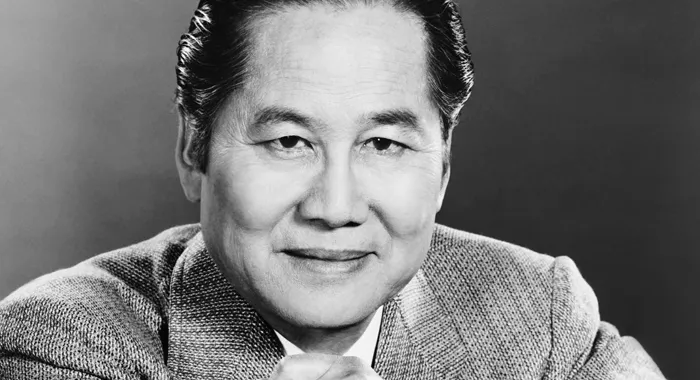
(Photo by Everett Collection)
Although he was born in Guangzhou, China, Keye Luke immigrated to the States at a young age and grew up in Seattle, Washington, where he cultivated a talent for art — he even contributed to the murals found inside the historic Grauman’s Chinese Theatre in Los Angeles. When he finally made the leap to acting, he caught his big break almost immediately, landing the role of Lee Chan, the “Number One Son” of Warner Oland’s screen detective Charlie Chan, in 1935’s Charlie Chan in Paris. Luke would go on to play the character six more times in subsequent Charlie Chan films, but it was only a small example of his talents. In 1940, he headlined Phantom of Chinatown, taking over the role of Chinese American detective Mr. Wong, previously played by Boris Karloff, and making him the rare Asian lead in an Asian role. Over a 55-year career that included more than 230 credits, Luke was another sought-after character actor who worked with a broad swath of top talent and secured memorable roles as Master Po in the TV series Kung Fu and, as many Gen Xers may remember, the antique shop owner Mr. Wing in the Gremlins movies.
“[Keye Luke] pictures well, is along suave lines, and has a clear, incisive voice.”
– Roy Chartier, Variety, Jan. 1, 1941 on Phantom of Chinatown
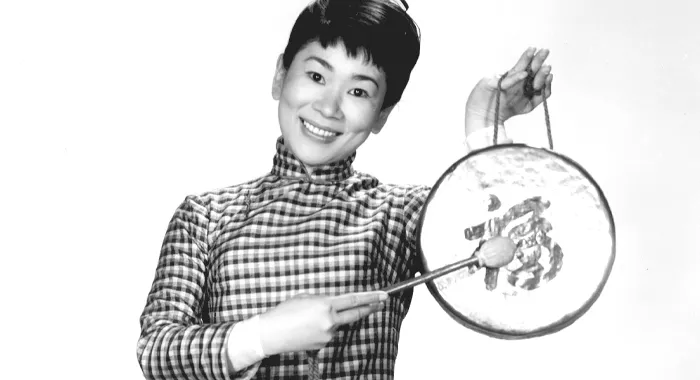
(Photo by Everett Collection)
Unlike most of the others on this list, Miyoshi Umeki’s career technically began in her native country of Japan, where she succeeded as a recording artist and appeared in a 1953 film called Seishun Jazz musume. When she finally moved to the United States in 1955, she signed a deal with Mercury Records and released a couple of albums. But her appearances on a popular variety show caught the attention of director Joshua Logan, and she made her feature acting debut (and sang the title theme song) in his 1957 film Sayonara, opposite Red Buttons and Marlon Brando. Her performance earned rave reviews and led to a history-making Best Supporting Actress win at the 30th Academy Awards, the first ever for an actor of Asian descent.
Umeki was also nominated for a Best Actress Golden Globe for her performance in the 1961 musical adaptation of the novel Flower Drum Song, the first major Hollywood film to star a majority Asian-American cast in an Asian-American story (there wouldn’t be another until 1993’s The Joy Luck Club), but she spent most of the rest of her career on television. In 1969, Umeki took a starring role in the sitcom The Courtship of Eddie’s Father, which ran for three seasons and earned her yet another Golden Globe nomination; she retired from acting when the series ended. While Umeki broke new ground with her Oscar win, no other actor of Asian descent would achieve the honor until Ben Kingsley won Best Actor in 1982, and it wasn’t until 2020 when another Asian actress, Minari’s Youn Yuh-jung, would win the Best Supporting Actress category again.
“[Miyoshi Umeki] is the real star of Sayonara. If she doesn’t get an Academy Award for her performance, the judges should be charged with grand larceny. ”
– Buck Buchwach, Honolulu Advertiser, March 1, 1958 on Sayonara
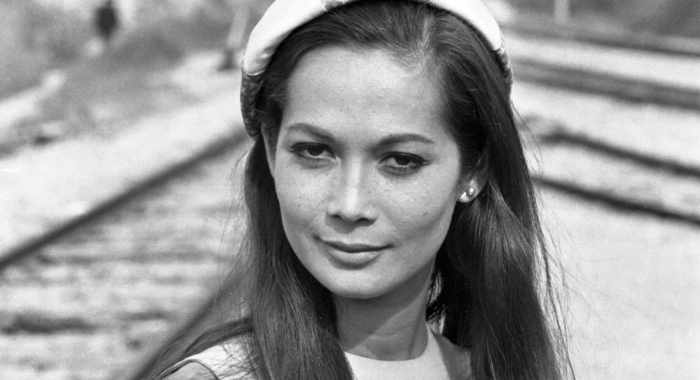
(Photo by Reporters Associes/Getty Images)
Born in 1939 to an esteemed Cantonese architect and a model of English and Scottish descent, Nancy Kwan earned accolades for her very first film appearance in 1960’s The World of Suzie Wong, which nabbed her a Golden Globe nomination for Best Actress – Drama and a shared win for Most Promising Newcomer. It was a stunning turnaround for someone who famously flubbed her audition, subsequently had to take acting classes, and ultimately only secured the role after an impressive run in the original stage production of the film (as well as a cast and crew shake-up behind the scenes). The film proved to be both a box office success and a major coming-out party for Kwan, who immediately became a style icon due to a scene in which she reclined on a sofa wearing a form-fitting Chinese dress called a cheongsam — she even graced the cover of Life magazine in the one-piece, which came to be called “the Suzie Wong dress.”
The following year, Kwan appeared alongside Miyoshi Umeki in the groundbreaking Flower Drum Song, which allowed her to flex her ballet-trained dancing skills and, together with The World of Suzie Wong, skyrocketed her popularity and public image. Unfortunately, like many before her, Kwan discovered that Hollywood was only interested in pigeonholing her into the kinds of Asian roles she wanted to avoid and spent much of the following decades jumping between American and European productions. She has remained active in film, television, and theater, and along with her husband Norbert Meisel, strives to write and direct films about Asian Americans, specifically to increase representation.
“Miss Kwan, however, remains an unfailing delight.”
– Times (UK), Feb. 23, 1962 on Flower Drum Song
Archival curation and research for this feature was led by Tim Ryan.